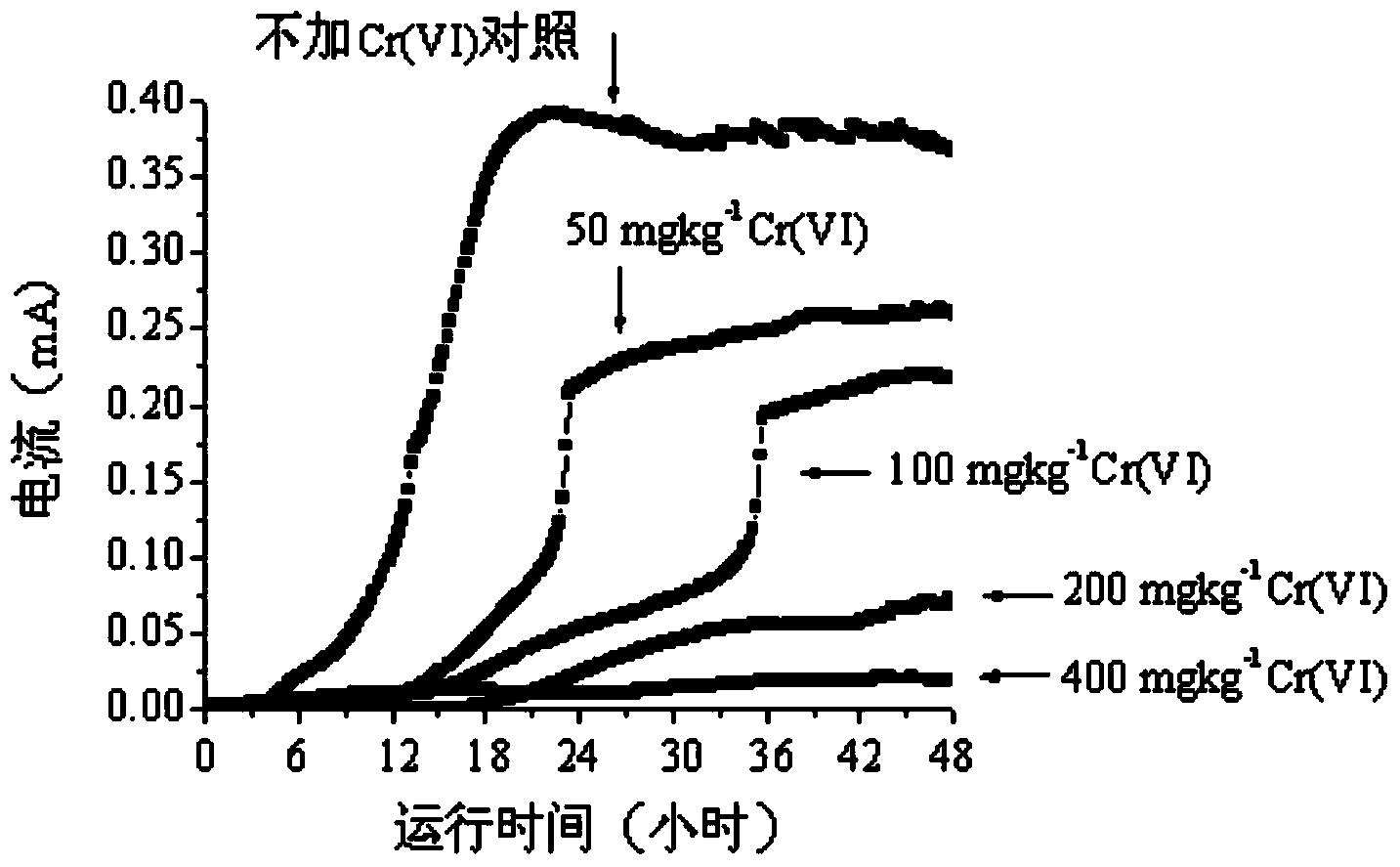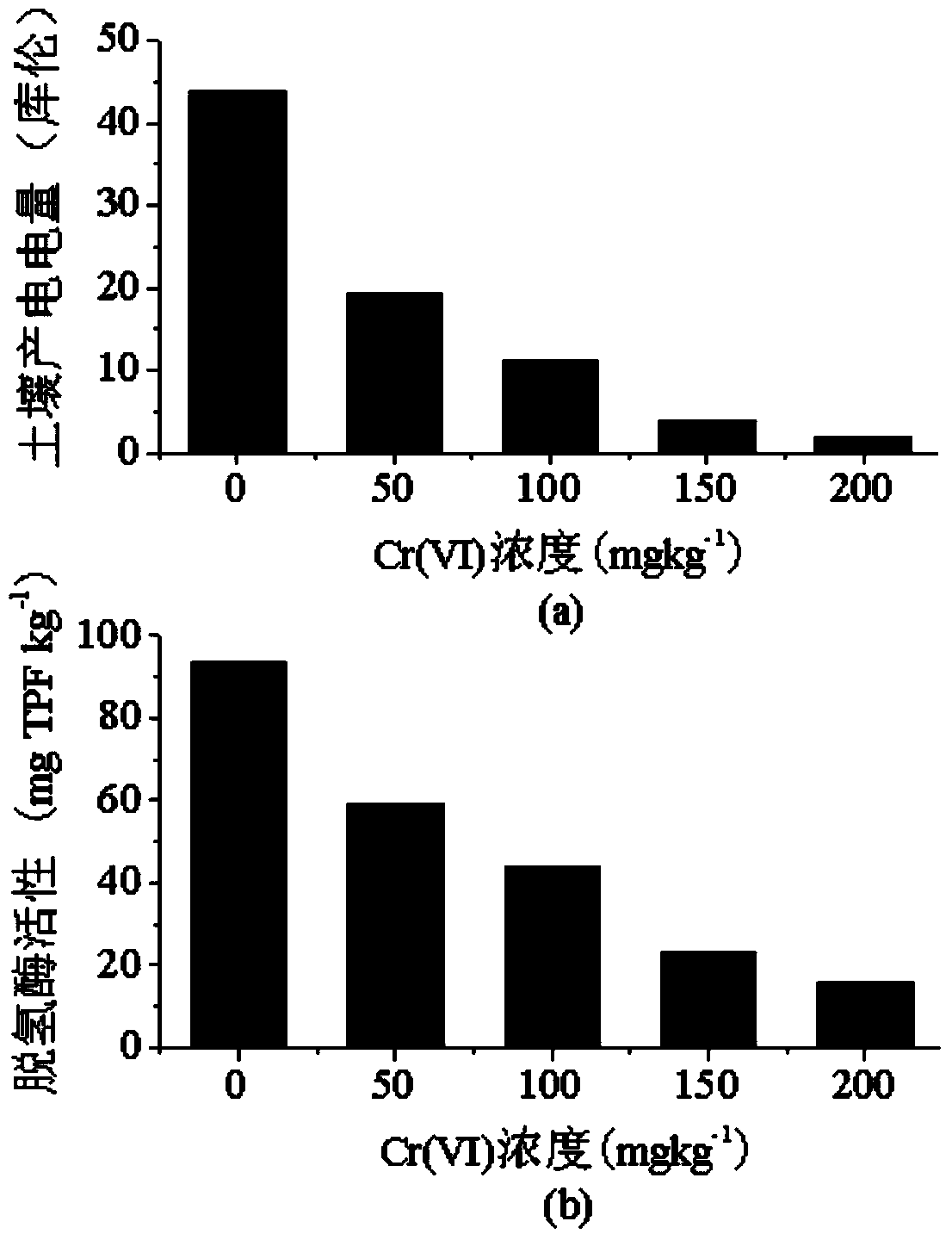Method for detecting pollution toxicity of soil by adopting electric signals of double-chamber microbial fuel cell
A fuel cell and soil pollution technology, which is applied in the direction of measuring devices, analyzing materials, and material analysis through electromagnetic means, can solve the problems of long detection cycle, high cost, and easy pollution, and achieve short detection cycle, low cost, and The effect of low running cost
- Summary
- Abstract
- Description
- Claims
- Application Information
AI Technical Summary
Problems solved by technology
Method used
Image
Examples
specific Embodiment approach
[0028] Specific implementation method: MFC with double chamber structure is adopted, the wall size of each chamber is 6cm×6cm×6cm, the wall thickness is 0.5cm, and the effective volume is 216mL. The two compartments are separated by a proton exchange membrane. The carbon felt is used as the electrode, the specifications of the cathode carbon felt and the anode carbon felt are 4cm×4cm×0.5cm (length×width×thickness), the distance between the electrodes is 6cm, and the external resistance of 1000Ω is connected between the electrodes. The soil is the woodland soil in the middle and lower reaches of the Yangtze River, which is a typical yellow-brown soil. Divide the soil into 5 parts and add different Cr(VI) concentrations of K 2 Cr 2 o 7 Solution and mix well with the soil, so that the Cr(VI) concentration in the soil reaches 0 (no Cr(VI) control), 50, 100, 200 and 400mgkg -1 . After the soil was aged for 1 day, electricity production was detected by MFC and dehydrogenase act...
PUM
 Login to View More
Login to View More Abstract
Description
Claims
Application Information
 Login to View More
Login to View More - R&D
- Intellectual Property
- Life Sciences
- Materials
- Tech Scout
- Unparalleled Data Quality
- Higher Quality Content
- 60% Fewer Hallucinations
Browse by: Latest US Patents, China's latest patents, Technical Efficacy Thesaurus, Application Domain, Technology Topic, Popular Technical Reports.
© 2025 PatSnap. All rights reserved.Legal|Privacy policy|Modern Slavery Act Transparency Statement|Sitemap|About US| Contact US: help@patsnap.com



